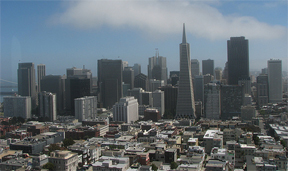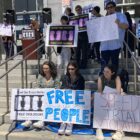The Bay Area economy continued to slow from late February to early April, though some sectors showed signs of stabilizing, the Federal Reserve said Wednesday.
 |
| Photo by Shayne Kaye |
Releasing its latest Beige Book, a summary of 12 regional reports, the Fed points to Silicon Valley as the big drag on the local economy. There are indications, however, that the computer and information technology sectors may be poised to rebound later in the year.
Intel said Tuesday that PC sales had “bottomed out” in the first quarter and that the worst was behind the industry. The Santa Clara-based chipmaker reported quarterly earnings that beat expectations.
The housing sector also showed some improvement. Sales picked up from the lows of 2008, though they were driven largely by low mortgage rates and purchases of foreclosed homes. The California Realtors Association said its data indicate that prices are continuing to fall.
Most industries, however, remained in dismal condition. Retail — especially big-ticket and luxury goods — continues to struggle as consumers cut back on shopping or look to save money. Bargain retailers are faring much better.
Here are the highlights for the 12th District, which includes San Francisco:
- Upward price pressures eased further, and upward wage pressures remained virtually nonexistent.
- Retailers reported generally sluggish sales and a continued shift towards less expensive items, and demand for services softened further.
- Demand remained extremely weak for manufactured products on net, although slight firming was reported for information technology products.
- Demand held largely steady for agricultural producers, but fell further for oil extractors.
- Activity in district housing markets stayed feeble, and demand for commercial real estate continued to decline.
- Contacts from financial institutions reported that overall loan demand weakened further and credit availability remained quite tight.
Read the full February-to-April report here.
San Francisco is the largest of the Federal Reserve’s 12 districts and was one of five to show some improvement in the latest report. It marks a change from December and January.
“At that point, the signs coming from all sectors of the economy, almost without exception, were pointing downward, that conditions were deteriorating and the pace of deterioration was picking up,” said Rob Valleta, a regional analyst with the Federal Reserve Bank of San Francisco.
The Beige Book — named for the color of the binder — is published eight times per year and is released the Wednesday two weeks before a Federal Open Market Committee meeting. It is a summary of data compiled by the 12 Federal Reserve banks, which rely on anecdotal information from Fed directors and interviews with key business contacts, economists, market experts and other sources. The next report will be released June 10.










